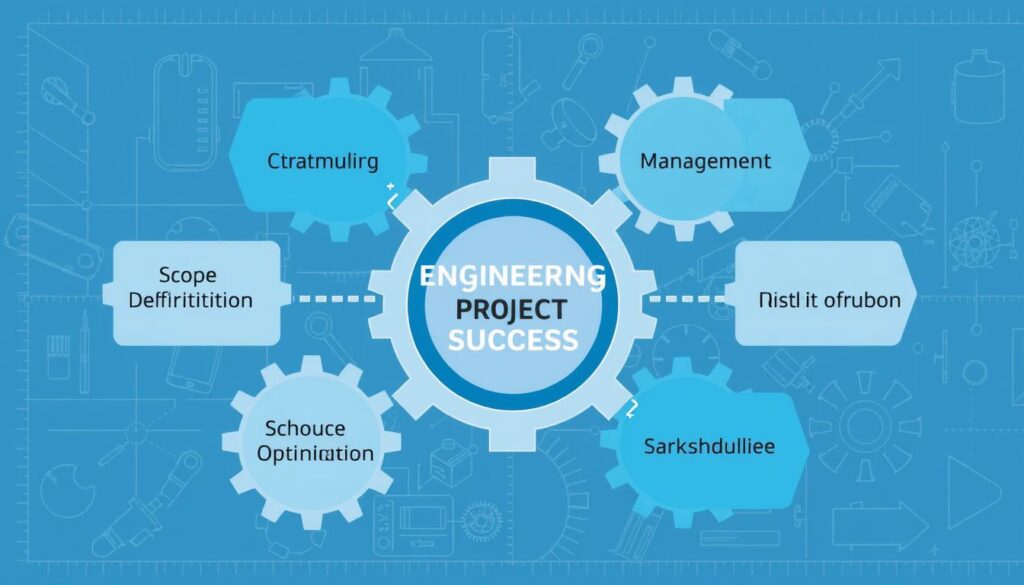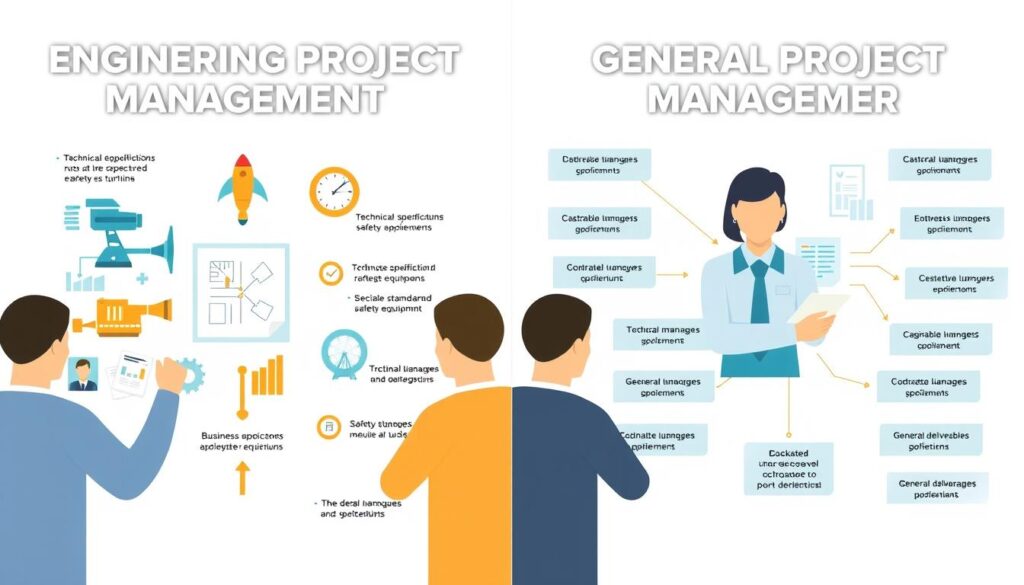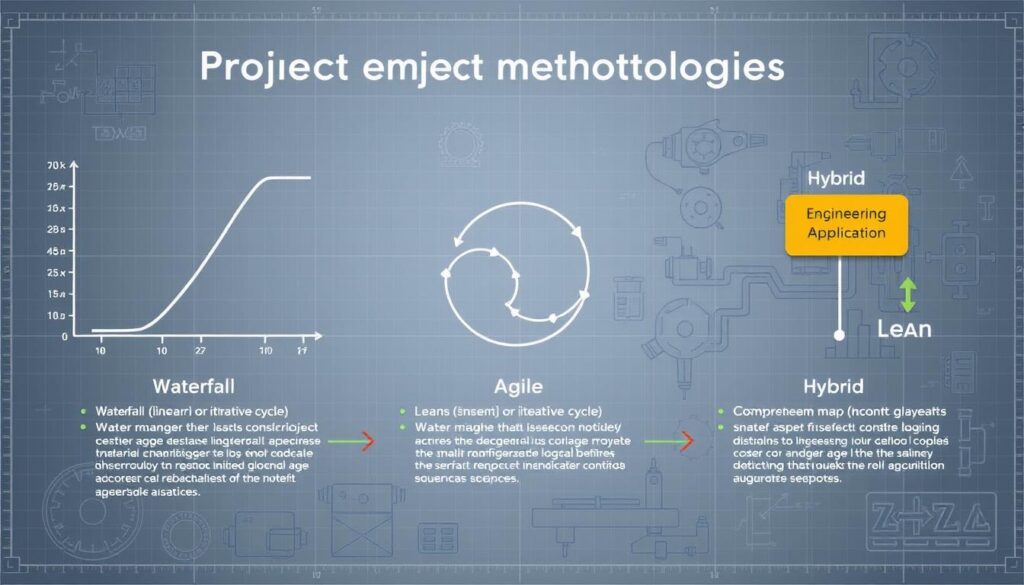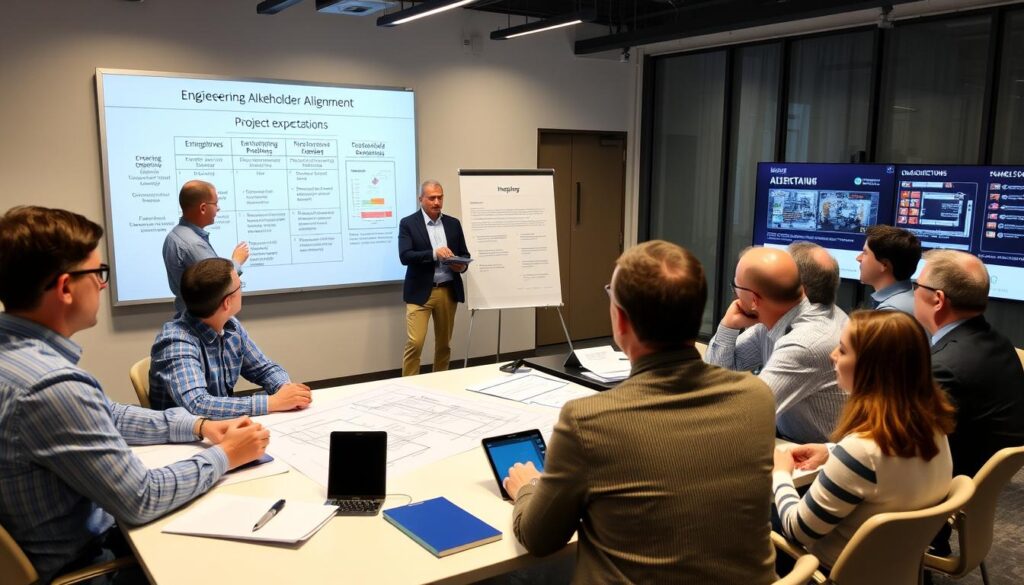Engineering project management combines technical expertise with project management principles to deliver complex technical initiatives successfully. Understanding the core objectives of engineering project management is essential for engineers, project managers, and technical leaders who aim to deliver projects on time, within budget, and according to specifications. This comprehensive guide explores the fundamental objectives that drive successful engineering project management and provides practical insights for implementing them effectively.
What is Engineering Project Management?
Engineering project management is the application of project management principles, methodologies, and tools to engineering projects. It involves planning, organizing, coordinating, and controlling resources to achieve technical and engineering objectives within specific constraints. Unlike general project management, engineering project management requires specialized technical knowledge and focuses on delivering products, systems, or structures that meet precise engineering specifications.
The engineering project manager serves as the bridge between technical engineering teams and business stakeholders, ensuring that projects deliver both technical excellence and business value. They must understand engineering principles, technical requirements, and industry standards while also mastering project management fundamentals like scheduling, budgeting, and resource allocation.
Engineering projects often involve complex technical challenges, multidisciplinary teams, and strict regulatory requirements. Whether developing new products, constructing infrastructure, or implementing technical systems, engineering project management provides the framework for turning technical concepts into reality through structured processes and methodologies.
Core Objectives of Engineering Project Management
The objectives of engineering project management provide a roadmap for project success. These objectives guide decision-making, resource allocation, and performance measurement throughout the project lifecycle. Let’s explore the essential objectives that engineering project managers must prioritize:

1. Scope Definition and Management
Defining and managing project scope is perhaps the most fundamental objective of engineering project management. This involves clearly articulating what the project will deliver, establishing boundaries, and documenting specific requirements and deliverables. Effective scope management prevents “scope creep” – the uncontrolled expansion of project requirements – which can derail timelines and budgets.
Real-World Example: In the development of a new medical device, the engineering project manager established clear scope boundaries by defining specific functionality requirements, performance parameters, and regulatory compliance needs. When stakeholders later requested additional features, the manager implemented a formal change control process that evaluated each request against project constraints, preventing scope expansion that would have delayed FDA approval.
2. Schedule Development and Control
Developing realistic project schedules and controlling progress against planned timelines is a critical objective. Engineering project managers must sequence activities, estimate durations, identify dependencies, and establish milestones. They must also monitor progress, identify delays early, and implement corrective actions to keep the project on schedule.
Real-World Example: During the construction of a hydroelectric dam, the engineering project manager used critical path methodology to identify activities that directly impacted the project completion date. When geological surveys revealed unexpected rock formations, the manager reorganized the construction sequence to work on other areas while developing solutions for the challenging sections, ultimately maintaining the original completion date.
3. Budget Management and Cost Control
Managing project costs within approved budgets is a key objective that directly impacts project success. Engineering project managers must develop detailed cost estimates, allocate budgets to work packages, track expenditures, and forecast final costs. They must also identify cost variances early and implement cost control measures when necessary.

Real-World Example: In the development of a new semiconductor manufacturing facility, the engineering project manager implemented earned value management techniques to track cost performance. When equipment prices increased unexpectedly, the manager negotiated with suppliers, adjusted procurement strategies, and reallocated resources from under-budget areas to maintain overall budget compliance.
4. Quality Assurance and Control
Ensuring that project deliverables meet specified quality standards is a fundamental objective of engineering project management. This involves establishing quality requirements, implementing quality assurance processes, conducting inspections and tests, and addressing defects or non-conformances. In engineering projects, quality directly impacts safety, performance, and regulatory compliance.
Real-World Example: For an aerospace engineering project developing flight control systems, the project manager implemented a comprehensive quality management plan that included design reviews, simulation testing, prototype validation, and compliance verification. This systematic approach identified potential issues early in the development process, reducing rework and ensuring the final system met stringent aviation safety standards.
5. Risk Identification and Mitigation
Identifying, analyzing, and mitigating project risks is a critical objective that helps prevent problems before they occur. Engineering project managers must systematically identify potential risks, assess their probability and impact, develop response strategies, and monitor risk triggers. Effective risk management is particularly important in engineering projects due to their technical complexity and safety implications.

Real-World Example: During the design of a coastal bridge, the engineering project manager conducted comprehensive risk workshops that identified potential issues related to weather conditions, soil stability, and material performance. The team developed contingency plans for high-priority risks, including alternative construction methods for severe weather periods, which proved invaluable when unexpected storms occurred during the construction phase.
6. Resource Optimization
Optimizing the use of project resources – including personnel, equipment, materials, and facilities – is a key objective that impacts both efficiency and effectiveness. Engineering project managers must identify resource requirements, secure necessary resources, allocate them efficiently, and resolve resource conflicts. They must also ensure that specialized engineering talent is utilized effectively.
Real-World Example: In a multi-site telecommunications infrastructure upgrade, the engineering project manager created a resource-leveling plan that optimized the deployment of specialized technicians across different locations. By analyzing skill requirements and geographical distribution, the manager developed a rotation schedule that minimized travel time, reduced idle periods, and ensured that critical skills were available when needed at each site.
7. Stakeholder Management and Communication
Managing stakeholder expectations and maintaining effective communication is an essential objective that influences project perception and support. Engineering project managers must identify stakeholders, understand their interests and influence, develop communication strategies, and engage stakeholders appropriately throughout the project lifecycle.

Real-World Example: For a public transportation infrastructure project, the engineering project manager developed a comprehensive stakeholder management plan that included regular community forums, technical briefings for regulatory agencies, progress updates for funding organizations, and specialized communications for affected businesses. This proactive approach built support for the project and helped resolve concerns before they escalated into opposition.
Master Engineering Project Management Objectives
Download our comprehensive Engineering Project Management Objectives Checklist to implement these principles in your next project. This practical tool helps you track progress against each objective and ensure nothing falls through the cracks.
Additional Objectives for Modern Engineering Projects
Beyond the core objectives, modern engineering project management often incorporates additional objectives that reflect evolving industry priorities and challenges:
8. Sustainability and Environmental Responsibility
Increasingly, engineering projects must meet sustainability objectives that minimize environmental impact and promote responsible resource use. This includes reducing carbon footprint, minimizing waste, conserving energy and water, and selecting environmentally friendly materials and processes.
Real-World Example: In the design and construction of a new manufacturing facility, the engineering project manager established sustainability objectives that included LEED certification requirements, renewable energy integration, water recycling systems, and waste reduction targets. These objectives were incorporated into design specifications, procurement requirements, and construction practices, resulting in a facility that achieved LEED Gold certification and reduced operational costs through energy efficiency.
9. Innovation and Continuous Improvement
Fostering innovation and continuous improvement is becoming a more explicit objective in engineering project management. This involves creating an environment that encourages creative problem-solving, implementing lessons learned from previous projects, and adopting new technologies and methodologies that enhance project outcomes.

Real-World Example: For a product development project in the automotive industry, the engineering project manager implemented an innovation objective that included regular ideation sessions, cross-functional collaboration workshops, and a formal process for evaluating and implementing improvement suggestions. This approach led to several breakthrough solutions for weight reduction and energy efficiency that differentiated the final product in the market.
10. Knowledge Management and Transfer
Capturing, organizing, and transferring project knowledge is an increasingly important objective that supports organizational learning and future project success. Engineering project managers must implement systems and processes for documenting technical decisions, lessons learned, and best practices that can benefit future projects.
Real-World Example: In a pharmaceutical facility design project, the engineering project manager established a knowledge management objective that included detailed documentation of design rationales, technical decisions, regulatory interpretations, and problem-solving approaches. This information was organized in a searchable database that became a valuable resource for subsequent facility projects, reducing design time and improving compliance consistency.
Engineering vs. General Project Management Objectives
While engineering project management shares many objectives with general project management, there are important differences in emphasis, application, and technical considerations. The following table highlights these distinctions:
| Objective | Engineering Project Management | General Project Management |
| Scope Definition | Heavily focused on technical specifications, performance parameters, and engineering standards. Requires detailed technical documentation and verification methods. | Broader focus on deliverables and features. May have less rigorous technical documentation requirements. |
| Quality Management | Emphasizes technical performance, safety, reliability, and compliance with engineering standards and regulations. Often involves specialized testing and validation. | Focuses on meeting customer requirements and specifications. May have less stringent testing and validation requirements. |
| Risk Management | Prioritizes technical and safety risks. Includes specialized risk analysis techniques like FMEA, fault tree analysis, and safety assessments. | Broader focus on schedule, budget, and scope risks. May use less specialized risk analysis techniques. |
| Resource Management | Requires specialized technical expertise and equipment. Often involves managing scarce technical resources across multiple projects. | May involve more general resources and skills. Resource constraints may be less technically specialized. |
| Stakeholder Management | Includes technical stakeholders like regulatory agencies, standards bodies, and technical specialists. Often requires translating complex technical information for non-technical stakeholders. | May have a broader range of stakeholders but with less technical diversity. Communication may be less technically complex. |
| Knowledge Management | Emphasizes capturing technical decisions, design rationales, and engineering solutions for future reference and reuse. | Focuses more on process improvements, lessons learned about project execution, and organizational best practices. |

Enhance Your Project Management Approach
Download our detailed comparison table of Engineering vs. General Project Management Objectives with practical implementation strategies for each objective type.
Project Management Methodologies for Engineering Objectives
Different project management methodologies can be applied to achieve engineering project objectives, each with strengths and limitations. The choice of methodology should align with project characteristics, organizational culture, and specific objectives.

Waterfall Methodology
The traditional waterfall approach follows a sequential process with distinct phases (requirements, design, implementation, verification, maintenance). This methodology works well for engineering projects with well-defined requirements, limited uncertainty, and formal documentation needs. It supports objectives related to scope definition, quality assurance, and regulatory compliance through its structured approach and comprehensive documentation.
Agile Methodology
Agile methodologies emphasize iterative development, flexibility, and continuous customer feedback. In engineering contexts, Agile approaches can support objectives related to innovation, stakeholder engagement, and adaptation to changing requirements. They are particularly valuable for engineering projects with evolving requirements or where early delivery of partial functionality provides value.
Lean Methodology
Lean methodologies focus on eliminating waste and maximizing value. In engineering project management, Lean principles support objectives related to resource optimization, efficiency, and continuous improvement. Techniques like value stream mapping help identify and eliminate non-value-adding activities in engineering processes.
Hybrid Approaches
Many engineering organizations adopt hybrid approaches that combine elements of different methodologies to address specific project needs. For example, using Waterfall for overall project structure while incorporating Agile techniques for design iterations or using Lean principles for process optimization within a traditional project framework.
“The most effective engineering project managers select and adapt methodologies based on project characteristics rather than dogmatically following a single approach. The methodology should serve the project objectives, not the other way around.”
Implementing Engineering Project Management Objectives
Successfully implementing engineering project management objectives requires systematic processes, appropriate tools, and organizational support. Here are key strategies for effective implementation:

1. Objective Definition and Measurement
Clearly define each project objective with specific, measurable criteria for success. Establish key performance indicators (KPIs) that allow objective assessment of progress and achievement. For engineering projects, these often include technical performance metrics, compliance verification, and quantitative quality measures.
2. Integration with Project Lifecycle
Integrate objectives into each phase of the project lifecycle, from initiation through closure. Develop phase-specific activities and deliverables that support each objective. For example, risk management objectives should be supported by risk identification activities during planning, risk monitoring during execution, and risk response evaluation during closure.
3. Tool and Template Development
Develop standardized tools, templates, and processes that support consistent implementation of project objectives. These might include scope definition templates, quality checklists, risk registers, resource allocation matrices, and stakeholder communication plans tailored to engineering project needs.
4. Team Training and Development
Ensure that project team members understand the objectives and their role in achieving them. Provide training on relevant methodologies, tools, and techniques. Develop specialized skills needed for engineering project success, such as technical risk assessment, engineering change management, or technical requirement analysis.
5. Continuous Monitoring and Adaptation
Implement systems for regularly monitoring progress against objectives and adapting approaches as needed. Use project reviews, performance metrics, and feedback mechanisms to identify areas for improvement. Be prepared to adjust strategies when objectives are not being met or when project conditions change.
Common Implementation Challenges
- Balancing competing objectives (e.g., quality vs. schedule)
- Managing technical complexity and uncertainty
- Securing specialized resources and expertise
- Aligning diverse stakeholder expectations
- Adapting to regulatory and compliance changes
Success Factors
- Strong executive support and organizational alignment
- Clear governance structures and decision processes
- Effective integration of technical and management expertise
- Robust change management processes
- Continuous learning and improvement culture
Standards and Guidelines for Engineering Project Management
Several international standards and guidelines provide frameworks for implementing engineering project management objectives effectively:

ISO 21500: Guidance on Project Management
This international standard provides high-level guidance on concepts and processes of project management that are important for successful projects. It establishes a common framework that can be applied across different industries, including engineering.
PMI’s Project Management Body of Knowledge (PMBOK)
The PMBOK Guide provides comprehensive guidance on project management practices, including specialized extensions for construction engineering. It offers detailed processes, tools, and techniques for implementing project management objectives effectively.
INCOSE Systems Engineering Handbook
For complex engineering projects, the International Council on Systems Engineering (INCOSE) handbook provides guidance on integrating systems engineering with project management to achieve technical objectives while managing project constraints.
Industry-Specific Standards
Many engineering disciplines have specialized standards that incorporate project management guidance, such as:
- IEEE 15288 for systems and software engineering
- ASCE standards for civil engineering projects
- API standards for oil and gas engineering projects
- IEC 62304 for medical device software development
“Engineering project management standards provide valuable frameworks, but they must be tailored to specific organizational contexts and project needs. The most effective implementations adapt standard practices to address unique engineering challenges while maintaining alignment with fundamental principles.”
Best Practices for Aligning Objectives with Stakeholder Expectations
Successful engineering project management requires aligning project objectives with stakeholder expectations. Here are best practices for achieving this alignment:

1. Comprehensive Stakeholder Identification
Identify all stakeholders who may influence or be affected by the engineering project, including technical specialists, end-users, regulatory agencies, funding organizations, and community representatives. Develop a stakeholder register that documents their interests, influence, and expectations.
2. Early and Continuous Engagement
Engage stakeholders early in the project lifecycle to understand their expectations and requirements. Continue engagement throughout the project to maintain alignment and address emerging concerns. For technical stakeholders, this may include design reviews, technical demonstrations, and specialized briefings.
3. Transparent Objective Setting
Develop project objectives through a transparent process that incorporates stakeholder input. Clearly communicate how objectives address stakeholder needs and concerns. Document trade-offs and prioritization decisions to provide context for future discussions.
4. Expectation Management
Proactively manage stakeholder expectations by clearly communicating project constraints, limitations, and trade-offs. Help stakeholders understand the relationships between competing objectives (e.g., scope, schedule, cost, quality) and the implications of their preferences.
5. Tailored Communication Strategies
Develop communication strategies tailored to different stakeholder groups, considering their technical background, information needs, and preferred communication channels. Translate complex technical information into appropriate formats for different audiences.
“The most successful engineering projects are those where technical excellence is achieved within the context of well-aligned stakeholder expectations. This requires not just engineering expertise, but also the ability to communicate effectively across disciplinary boundaries.”
Elevate Your Engineering Project Management Skills
Download our comprehensive guide to implementing the objectives of engineering project management in your organization. Includes templates, checklists, and best practices based on industry standards.
Conclusion: The Path to Engineering Project Success
The objectives of engineering project management provide a framework for delivering successful technical projects that meet stakeholder needs while adhering to constraints. By systematically addressing scope definition, schedule management, budget control, quality assurance, risk mitigation, resource optimization, and stakeholder engagement, engineering project managers can navigate the complexities of technical projects and deliver valuable outcomes.
Modern engineering project management continues to evolve, incorporating new objectives related to sustainability, innovation, and knowledge management. The most successful engineering organizations adapt their project management approaches to address these emerging priorities while maintaining focus on fundamental objectives.
Ultimately, effective engineering project management requires both technical expertise and management skill. It demands the ability to understand complex engineering challenges, apply appropriate methodologies and tools, and align diverse stakeholders around common objectives. By mastering these capabilities and implementing the objectives discussed in this guide, engineering project managers can consistently deliver successful projects that advance technical innovation and create value for their organizations and society.

“Engineering project management is both a science and an art. The science lies in the systematic application of proven methodologies and techniques. The art lies in adapting these approaches to specific project contexts and balancing competing objectives to deliver optimal value.”
Ready to Transform Your Engineering Project Management?
Access our complete library of engineering project management resources, including templates, guides, and tools specifically designed to help you implement the objectives discussed in this article.
